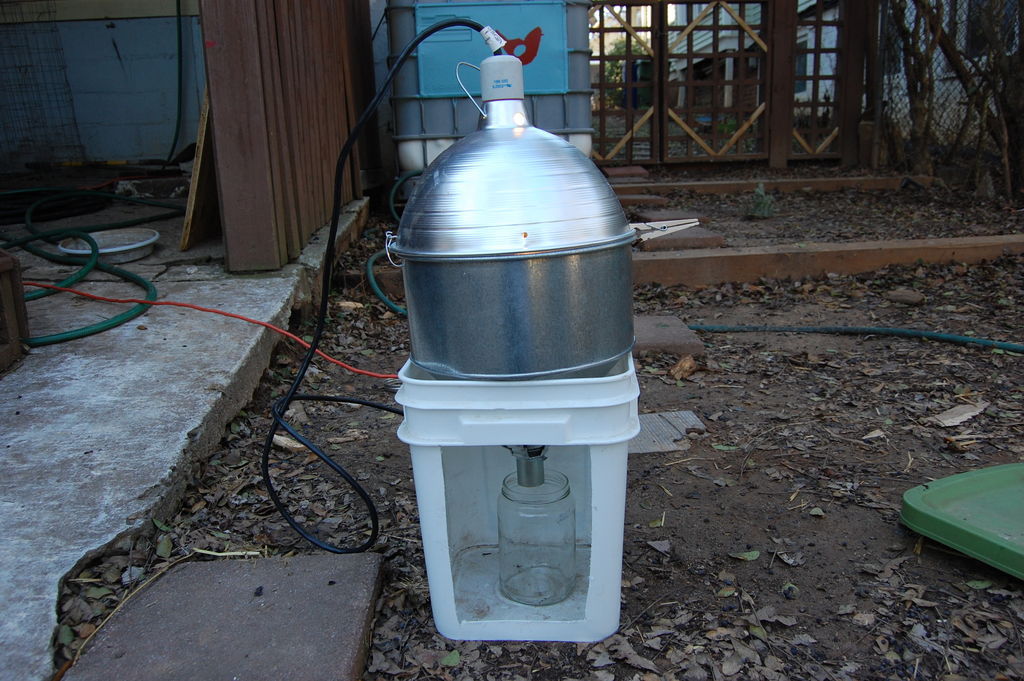Make a berlese funnel
Make a Berlese funnel from a jar, funnel, and light to safely extract and observe small soil insects from leaf litter, with adult supervision.



Step-by-step guide to make a Berlese funnel
Family Activity: Berlese Funnel
Step 1
Ask an adult to help you with this activity.
Step 2
Choose a tray or table and clear a small work area to keep things tidy.
Step 3
Secure the coffee filter or fine mesh to the narrow end of the funnel using tape or a rubber band so tiny animals cannot fall through.
Step 4
Place the funnel into the jar opening so it fits snugly and will not tip over.
Step 5
Put a small folded damp paper towel into the bottom of the jar to cushion any animals that fall in.
Step 6
Loosely fill the funnel with leaf litter and a little loose soil from where you collected it.
Step 7
Position the lamp or flashlight about 10–20 cm above the top of the leaf litter so it shines on the sample.
Step 8
Turn on the lamp or flashlight so the litter starts to warm and dry slowly.
Step 9
Wait undisturbed for 3 to 6 hours while the adult checks occasionally to make sure everything is safe.
Step 10
With adult help, turn off the lamp and carefully lift the funnel away from the jar.
Step 11
Use a magnifying glass to observe the insects collected at the bottom of the jar and note what you see.
Step 12
With adult help, gently release the insects back outside where you found them and clean up your materials.
Step 13
Share your finished creation and what you discovered on DIY.org.
Final steps
You're almost there! Complete all the steps, bring your creation to life, post it, and conquer the challenge!


Help!?
What can I use if I don't have a coffee filter or fine mesh for the funnel?
If you don't have a coffee filter or fine mesh, secure a piece of clean pantyhose or a cut piece of fine window screen to the narrow end of the funnel with tape or a rubber band, or make a cone-shaped funnel from a plastic bottle and stretch pantyhose over the neck.
What should I do if nothing collects in the jar or the setup seems to fail?
If no insects collect, check that the filter/mesh is sealed to the funnel so animals can't escape (step 3), that the lamp is about 10–20 cm above the litter and not too close (step 7), and that the leaf litter is loosely filled and slightly damp (step 6) so creatures can move downward.
How can I adapt this activity for younger or older children?
For younger children have the adult do steps 1–5 and 8–11 while the child helps add leaf litter and observes briefly with a magnifying glass, and for older kids let them build their own plastic-bottle funnel, run a 3–6 hour trial, and keep a species count in a field notebook.
How can I extend or personalize the Berlese funnel project?
To extend the activity, try collecting litter from different habitats to compare results, paint or label your jar, add a small LED lamp on a timer for consistent warming, and create a species chart to share your findings on DIY.org.
Watch videos on how to make a Berlese funnel
How to Make a Berlese Funnel
Facts about entomology for kids
🪲 A single handful of leaf litter can hide hundreds of tiny creatures like springtails, mites, and beetle larvae.
💡 Berlese funnels use light and gentle warmth to coax small critters downward into a collecting jar — a method used by scientists for over a century.
🧪 Researchers and kids alike use Berlese funnels to sample soil biodiversity — a DIY jar funnel works like a mini field lab!
🔬 Springtails are tiny hexapods commonly found in soil; they’re great recyclers and harmless to people.
🌱 The tiny animals in leaf litter help break leaves down into nutrient-rich soil that plants can use.
How do you make a Berlese funnel to collect soil insects?
What materials do I need for a kid-friendly Berlese funnel?
What ages is a Berlese funnel activity suitable for?
What safety precautions should I follow when making a Berlese funnel?


One subscription, many ways to play and learn.
Only $6.99 after trial. No credit card required



